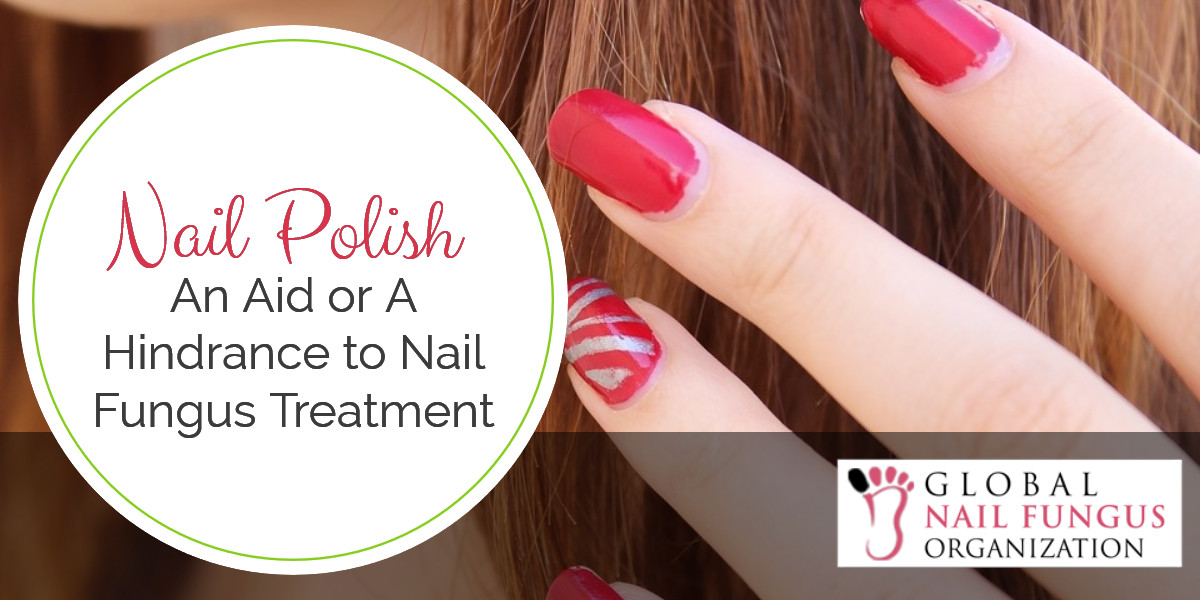 Nail Polish: An Aid or A Hindrance to Nail Fungus Treatment
Nail Polish: An Aid or A Hindrance to Nail Fungus Treatment
Table of Contents
Nail Polish and Onychomycosis
The use of nail polish has been primarily aesthetic since the elites of ancient Egypt and China had first used them. In a variety of shades and colors, may it be cracked, glittered, flaked, speckled, iridescent, or holographic, nail polish has definitely transcended through the times. Nail polish can instantly beautify the nails and give them a fresh and healthier look.
While it holds true to its purpose, wearing nail polish all the time can also mask certain nail abnormalities. There are lesser chances of spotting early onset of nail problems. Discolorations can also be hard to differentiate because this may either be due to prolonged wear of nail polishes or a sign of a nail infection. Onychomycosis, or nail fungal infections as it is commonly known, is a common nail infection. It happens when fungus infects the nail causing it to be deformed or discolored. When left undetected and untreated due to the use of nail polish, nail fungus may progressively get harder to cure and difficult to manage.
Wearing Nail Polish When You Have A Nail Fungal Infection
Pros of Wearing Nail Polish When You Have Nail Fungal Infections
In general, nail fungal infections change the color and texture of the nail, making it rough and discolored. Using nail polish is the easiest way to cover up this unattractive and embarrassing nail problem. In an instant, you’re able to give your nails a healthier impression.
Cons of Wearing Nail Polish When You Have A Nail Fungal Infection
Despite how much nicer and healthier your nails may look when you put on polish on an infected nail, this is just a temporary fix. Wearing it for longer periods might pose more harm than good to your nail fungus problem. Fungi thrives in darker environments and nail polish can easily promote its growth. Many commercial nail polishes use strong chemicals (like formaldehyde and toluene) in their product that may only cause further damage to a nail with fungal infection. At the same time, painting a healthy nail right after an infected nail may lead to contamination and affect other healthier nails. When treating nail fungal infections with topical treatments, nail polishes only prohibit its penetration and reduce the solution’s efficiency to cure.
Special Anti-fungal Nail Lacquers
Lately, some nail polishes have been formulated to serve specific purposes. To help treat nail fungal infections, anti-fungal nail lacquers are now being sold in the market. These kinds of nail polishes are not meant for beautifying purposes, and often come in clear colors only.
- Amorolfine
-
-
- Amorolfine is an active ingredient found in some types of anti-fungal nail lacquers. It has properties that treat infections caused by fungi, yeasts, and molds.
- How Does It Work?
- Amorolfine is an anti-fungal medicine designed to kill fungi and yeasts by interfering with their cell membranes. By doing this, it is able to stop fungi from producing a substance called ergosterol, which is an essential component of fungal cell membranes.
- Researches and studies on its effectivity:
- Amorolfine does not promise total and complete treatment of fungal nail infections. This anti-fungal nail lacquer also has to be applied regularly for about 9-12 months to see significant results.
-
- Ciclopirox
-
- Ciclopirox is a topical nail lacquer that is used along regular nail trimmings to treat fungal nail infections.
- How Does It Work?
- Ciclopirox is under the class of anti-fungal medications with the primary purpose of stopping the growth of nail fungus.
- Researches and studies on its effectivity:
- Again, ciclopirox does not promise total and complete cure of onychomycosis but only provides improvement in the condition of the nail. It takes 6 months or longer to see results and continuous use is a must.
Precautions When using Special Nail Lacquers
The anti-fungal components used in special nail lacquers are strong chemicals that are best prescribed under a physician’s supervision. Here are some precautionary measures and signals that you should be aware of in case the nail lacquers cause unexpected side effects:
- Using anti-fungal nail lacquers should be directed by a healthcare professional.
- If you experience sensitivity and chemical irritation, treatment should be discontinued and a consultation with a medical specialist is recommended.
- Any redness, itching, burning, blistering, swelling, oozing in the nail or around it should be reported to your doctor.
- Clinical studies have shown that less than 12% of patients were able to completely cure their onychomycosis, which suggests that using nail lacquers work best when combined with other form of treatments.
Topical Anti-fungal Lacquers or Topical Anti-fungal Solutions?
There is a significant difference between topical anti-fungal lacquers and topical anti-fungal solutions. As mentioned, anti-fungal nail lacquers only promise improvement of the nail’s appearance, but not completely curing nail fungal infections. They also contain strong and abrasive chemicals that may cause certain side effects. On the other hand, the current topical antifungal solutions available nowadays have better efficiency rates when compared to other form of nail fungus treatment. Topical anti-fungal solutions may also have natural anti-fungal substances, such as tea tree oil. One of the best in the market right now is called EmoniNail, which has both undecylenic acid and tea tree oil that kills fungus and improves nail health.
Conclusion
Nail polishes give life and beauty to the nails. Using them can be tempting, especially if you are currently frustrated over an attractive nail problem like nail fungal infections. It is the easiest fix, but one has to remember that this is only temporary. Although convenient, using nail polish when you have a nail fungus problem is not recommended as it tends to only worsen the infection. Currently, there are special nail lacquers that serve as treatments for onychomycosis rather than temporary cover ups. These anti-fungal nail lacquers only promise improvement of nail’s health and appearance and not ultimately curing the nail fungal infection. Research has also revealed that only less than 12% are completely cured with this type of topical treatment.
Nail fungus is definitely a challenging nail problem, but fortunately, advancement in treatment is on its way. One of the best options right now is through topical anti-fungal solutions, like EmoniNail, that contains effective and natural anti-fungal properties that is proven to help cure your nail fungus problems.






